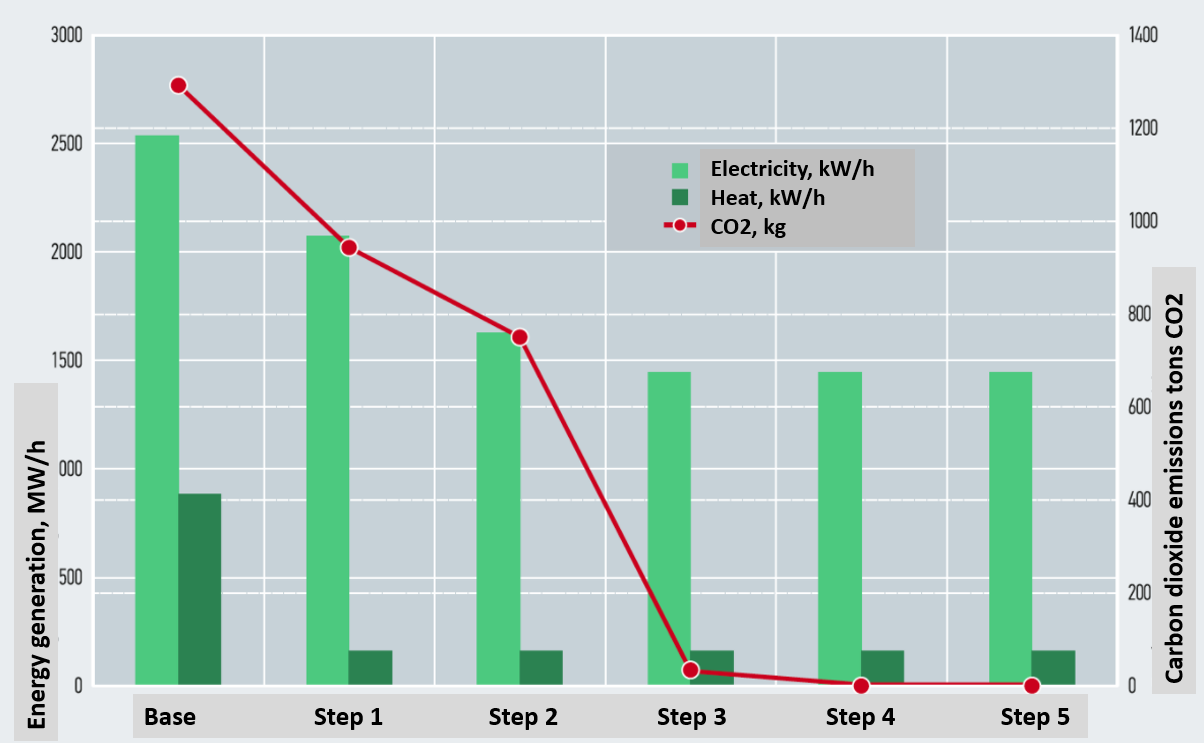




Currently, the heat and electricity generated in Russia is very carbon intensive due to the fact that the share of renewable energy in the total energy resources is too small. Russia still has a long way to go in terms of creating and including mechanisms to support renewable energy in the regulatory framework and entering the international market for emissions trading.
The bulk of CO2 emissions come from the combustion of fuels in the process of generating electricity and heat, which are essential for the functioning of buildings and a comfortable indoor climate for their users. A comprehensive environmental impact assessment of the construction of real estate is determined by assessing the level of greenhouse gas emissions at all stages of the life cycle (LC) of the building, including the production of building materials, construction work, operation of the facility and demolition (carring out the LCA for the building).
Information on emissions at all stages of the life cycle is used from the Environmental Product Declaration (EPD), as well as from specialized databases such as Impact, Athena, One-Click-LCA.
As an example of life cycle assessment and emission optimization, a plant expansion project is considered, which consists of two parts: an operating part and a newly built extension. All analysis refers to the expandable part with an area of 15,000 m². This is a project of the HPBS company, which provides environmental and energy engineering services, certification of buildings according to the green building standards LEED, BREEAM, WELL.
The first task solved at the design stage was the optimization of building structures and the selection of building materials with the lowest environmental impact. In addition, a general optimization of building space and material consumption has been carried out. The results of the life cycle assessment of the project for the original and optimized buildings are presented in the table below, which shows that, in all respects, there is a reduction in negative impacts compared to the original building. Thus, the optimization carried out has a positive result.

Next, the energy consumption of the building was optimized at the operational stage using digital modeling methods. During the design of the building, its virtual model was created and various solutions were tested to optimize energy consumption.
The following steps have been taken at this plant to reduce energy consumption and greenhouse gas emissions:
Step 1. Optimization of energy costs of the building and equipment. This move has reduced emissions by about 27% annually.
Step 2. Building a solar power plant. A solar power plant reduces greenhouse gas emissions by about 10% annually.
Step 3. Purchase of renewable energy in the wholesale market. The purchase of certificates for renewable energy is currently not liberalized in the Russian market. An ordinary ordinary company or person cannot purchase “green” energy for themselves. Therefore, international companies often have to buy certificates outside of Russia. A green certificate is a marketable product that certifies that electricity has been generated from a renewable (green) energy source. It is also called Renewable Energy Certificate (REC) or Renewable Obligation Certificate (ROC). The unit of measure used in a green certificate is usually MWh renewable energy. Purchasing renewable energy certificates offsets up to 100% of emissions from electricity use.
Step 4. Application of automated energy purchase algorithms in the wholesale market. A building can consume more energy when it is cheap (for example, at night) and save when it is more expensive (for example, at noon). These algorithms are part of smart networks and are called Demand Response. Such algorithms reduce peak loads on networks and increase the reliability and durability of the country’s energy infrastructure.
Step 5. Transition to biomass. A separate boiler house has been designed at the plant, which will provide heat using biomass. Fuel can be wood waste, fuel pellets, rice husks, wood shavings, sunflower husks, etc.
These measures will allow the plant to have no greenhouse gas emissions during operation.

By disclosing information on policies and activities aimed at reducing greenhouse gas emissions, participating in solving the problems of climate change, deforestation, as well as the deterioration of water resources, both in terms of quantitative and qualitative characteristics, companies declare their openness. They do not conduct business only in accordance with the principles of economic expediency, but also on paying great attention to sustainable development and environmental issues. Companies confirm that their activities are in line with the goals set in the 2015 Paris Climate Agreement.
С.О.К. – еmonthly industry publication for professionals in the market of engineering arrangement of buildings and structures. Published since 2002. SOK Magazine №9 | 2019 (pp. 82-89)
Development of the Concept of Optimization and Compensation of the Carbon Footprint